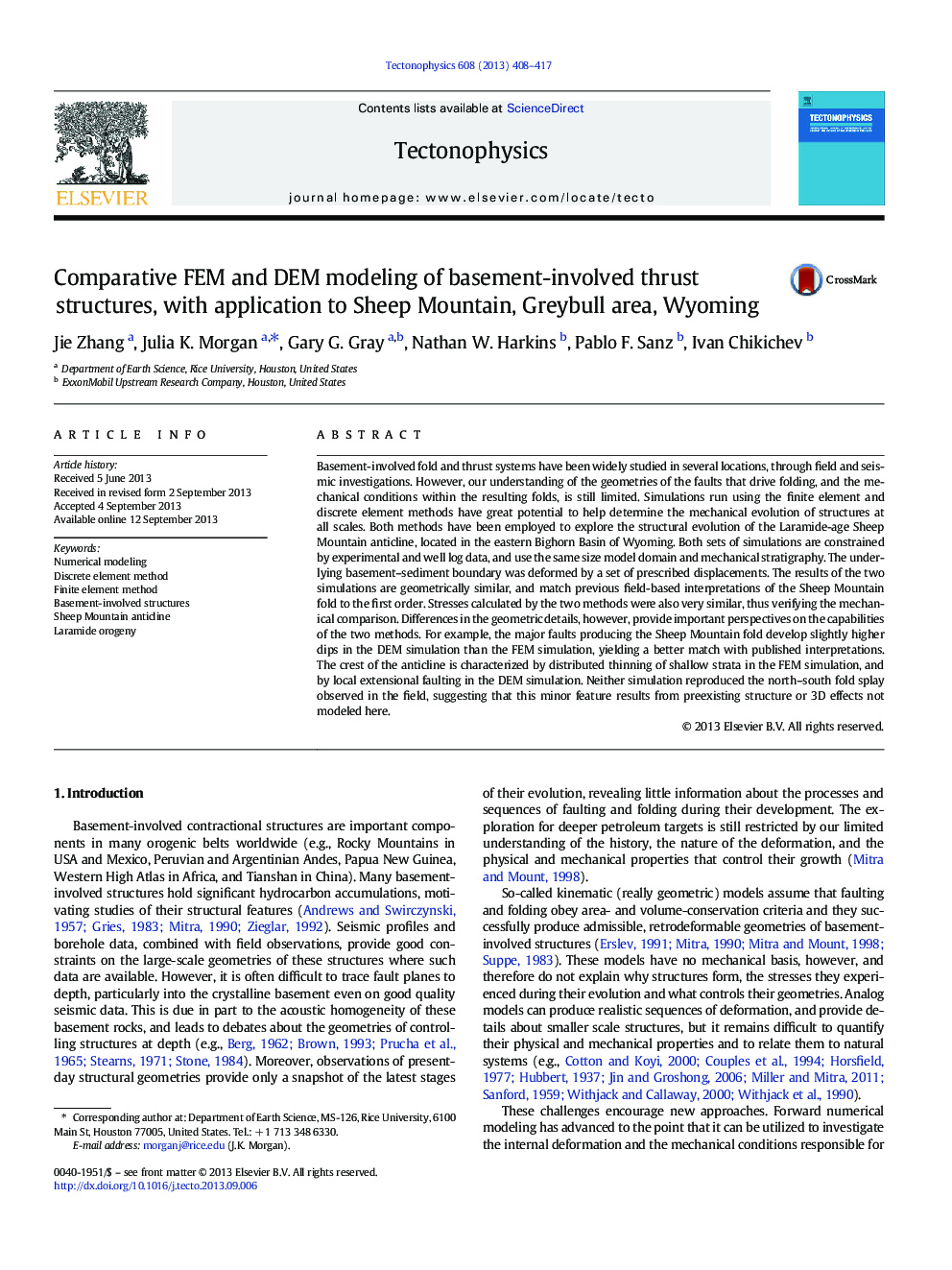| کد مقاله | کد نشریه | سال انتشار | مقاله انگلیسی | نسخه تمام متن |
|---|---|---|---|---|
| 6433959 | 1636779 | 2013 | 10 صفحه PDF | دانلود رایگان |

- Comparative structural modeling of a basement-involved Laramide-age deformation.
- Capabilities, similarities, and differences of different modeling techniques.
- Introduction of several new modeling and analysis approaches.
Basement-involved fold and thrust systems have been widely studied in several locations, through field and seismic investigations. However, our understanding of the geometries of the faults that drive folding, and the mechanical conditions within the resulting folds, is still limited. Simulations run using the finite element and discrete element methods have great potential to help determine the mechanical evolution of structures at all scales. Both methods have been employed to explore the structural evolution of the Laramide-age Sheep Mountain anticline, located in the eastern Bighorn Basin of Wyoming. Both sets of simulations are constrained by experimental and well log data, and use the same size model domain and mechanical stratigraphy. The underlying basement-sediment boundary was deformed by a set of prescribed displacements. The results of the two simulations are geometrically similar, and match previous field-based interpretations of the Sheep Mountain fold to the first order. Stresses calculated by the two methods were also very similar, thus verifying the mechanical comparison. Differences in the geometric details, however, provide important perspectives on the capabilities of the two methods. For example, the major faults producing the Sheep Mountain fold develop slightly higher dips in the DEM simulation than the FEM simulation, yielding a better match with published interpretations. The crest of the anticline is characterized by distributed thinning of shallow strata in the FEM simulation, and by local extensional faulting in the DEM simulation. Neither simulation reproduced the north-south fold splay observed in the field, suggesting that this minor feature results from preexisting structure or 3D effects not modeled here.
Journal: Tectonophysics - Volume 608, 26 November 2013, Pages 408-417